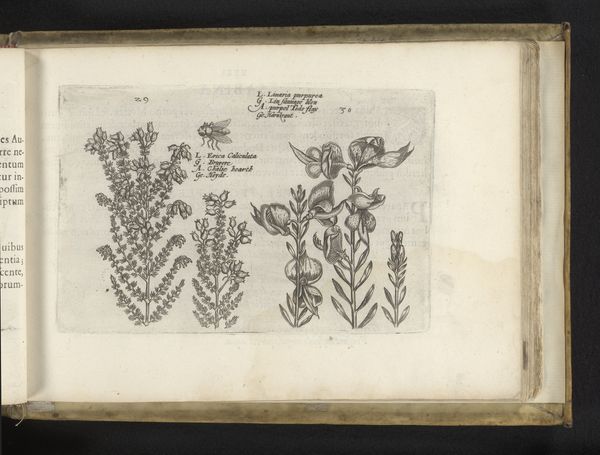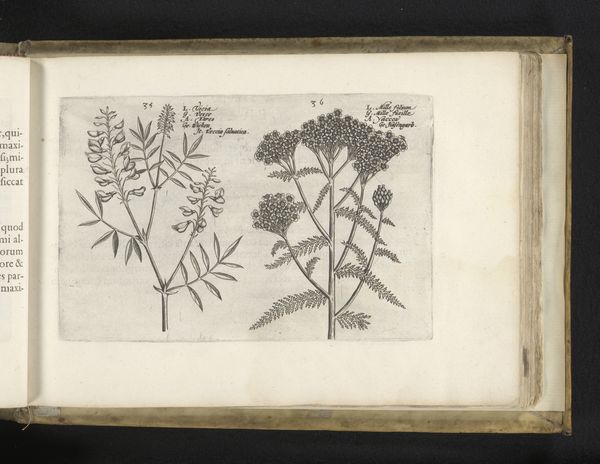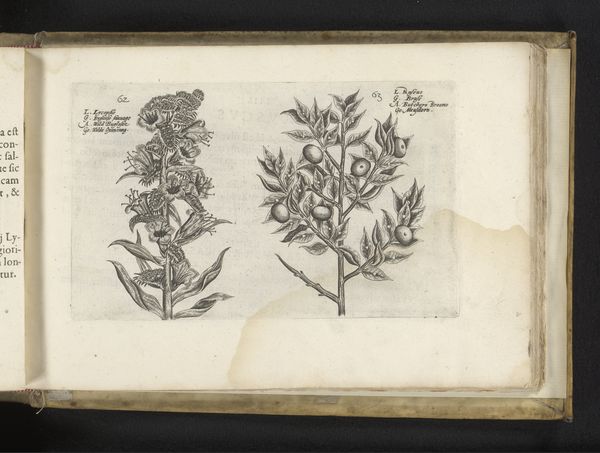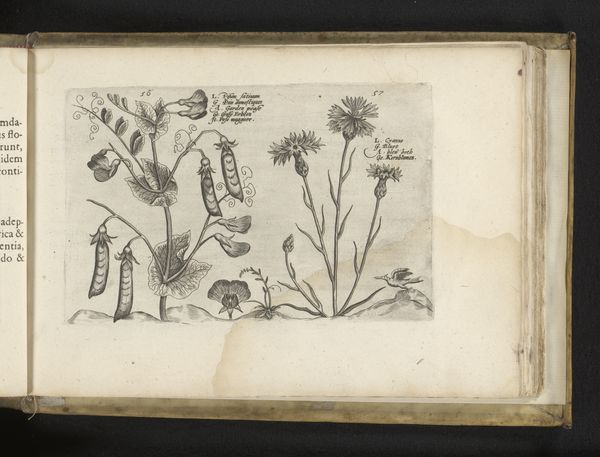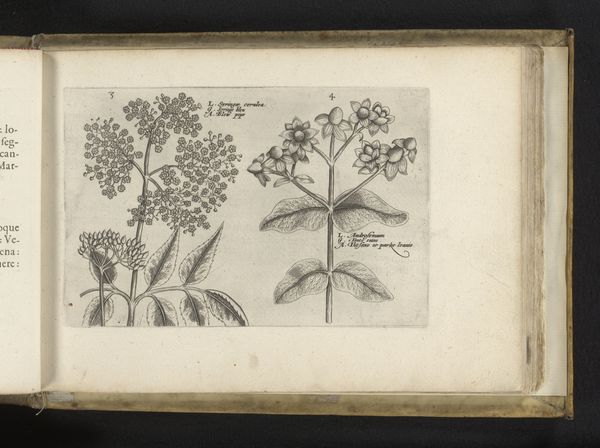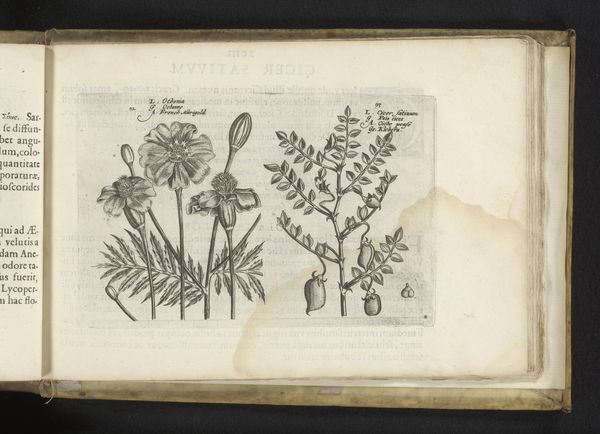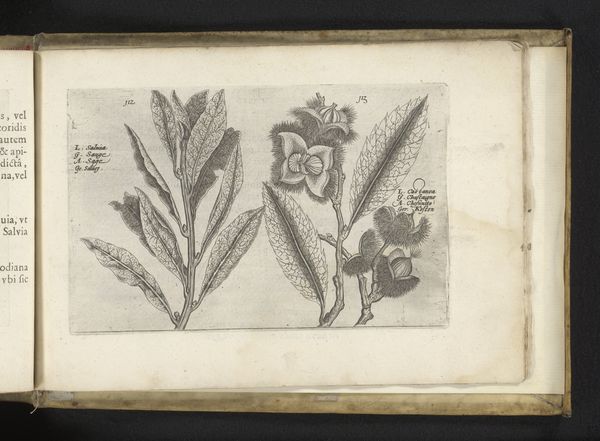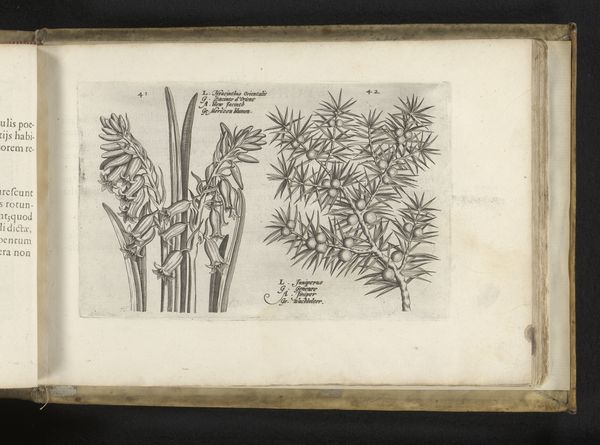
drawing, print, paper, ink, engraving
#
drawing
# print
#
flower
#
paper
#
11_renaissance
#
ink
#
northern-renaissance
#
engraving
Dimensions: height 128 mm, width 197 mm
Copyright: Rijks Museum: Open Domain
Curator: Looking at this engraving from 1617 by Crispijn van de Passe, titled *Tamarisk en vlasbekje,* my immediate thought goes to how starkly it captures botanical accuracy. It's currently held at the Rijksmuseum. Editor: It does have that lovely, clear quality! Almost austere in its dedication to form. One can tell it's from the Renaissance, but there's a severity here. Makes you wonder about the paper and ink he had access to—what trade routes existed to acquire them? Curator: I find it interesting that both the Tamarisk and Vlasbekje are given such equal prominence. They sit side-by-side, showcasing different aspects of the botanical world. Notice how carefully rendered the linework is, creating almost a textural feel? Editor: Exactly! It's not just an image; it's an object produced under specific social conditions. Engraving itself—etching into copperplates, wiping the ink—required skill. These weren't just decorative, but utilitarian prints, often disseminated among apothecaries, herbalists and members of the elite who fancied botany, illustrating access to the physical material and relevant skills of printing. Curator: That context shifts the whole meaning, doesn’t it? Suddenly it’s not just a pretty flower drawing, but a product reflecting both scientific inquiry and perhaps a decorative touch in wealthy houses. I wonder about the intended function; was it a botanical reference, or something with a deeper symbolic reading? Perhaps a reflection on the transience of beauty. Editor: Maybe both! These things often occupy liminal spaces; existing between categories that become more pronounced during industrialisation. Now you got me thinking about how these materials – paper made from rags, inks derived from minerals and plants – were the high technology of their time. There are multiple overlapping purposes and value associations at play. Curator: Thinking of them as tools used to democratize visual language definitely shifts our perception of prints, almost into instruction manuals, in a manner akin to today’s "wiki-how" illustrations! It speaks to the evolving nature of art and craftsmanship. Editor: Well, seeing this today invites us to consider these older frameworks where things didn't fall neatly into defined categories, right? Hopefully, that kind of helps viewers see art not just as "something pretty on the wall," but a product rooted in material and social exchanges. Curator: Yes! It reminds us that even seemingly simple images hold a depth of historical, scientific, and, I would add, poetic resonance, layered in time.
Comments
No comments
Be the first to comment and join the conversation on the ultimate creative platform.
